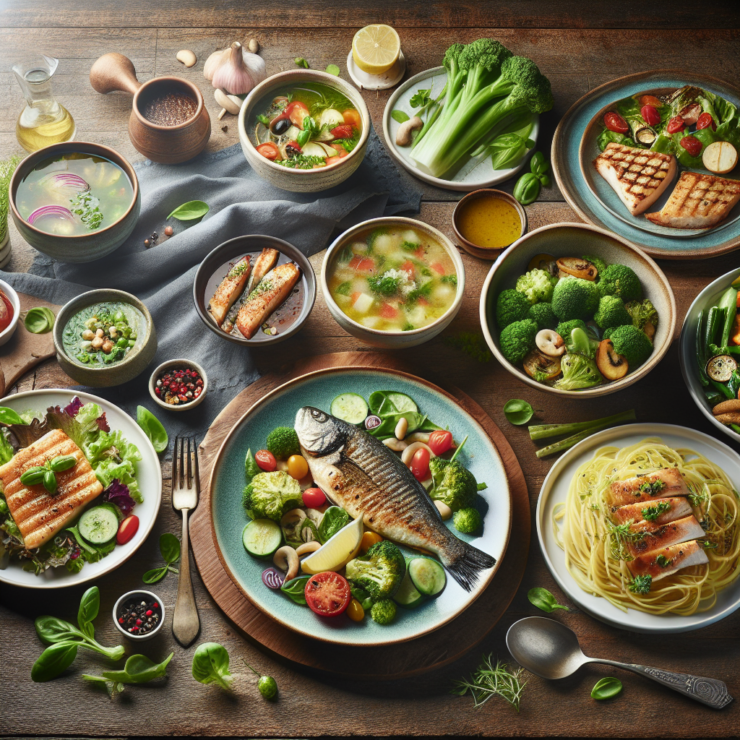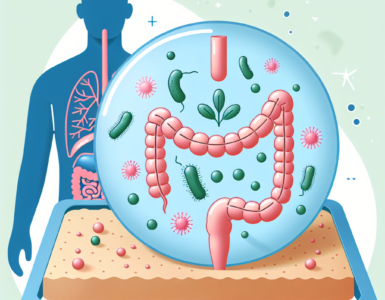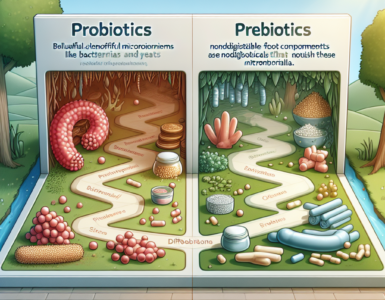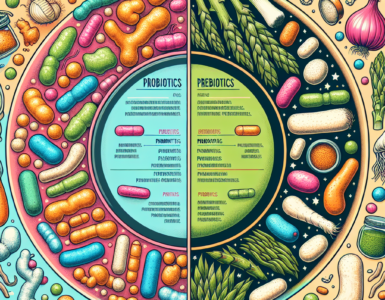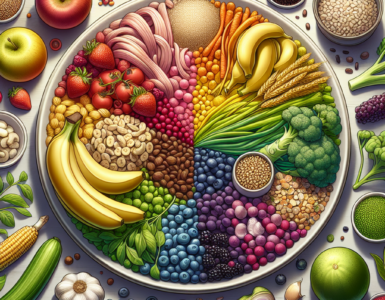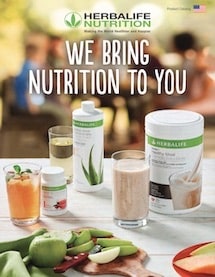The Calorie Deficit Approach to Weight Loss
Understanding the Basics of Calorie Deficit
A calorie deficit occurs when an individual consumes fewer calories than the body expends for energy. This deficit is the cornerstone of weight loss, as the body begins to utilize stored fat to make up for the energy shortfall, leading to weight reduction. The key to a successful calorie deficit is not just consuming fewer calories but doing so in a manner that does not compromise nutritional needs or leave one feeling perpetually hungry.
| Daily Activity Level | Estimated Daily Caloric Needs |
|---|---|
| Sedentary (little to no exercise) | 1,600-2,000 calories |
| Moderately active (moderate exercise/sports 3-5 days/week) | 2,000-2,500 calories |
| Active (hard exercise/sports 6-7 days a week) | 2,400-3,000 calories |
Creating a calorie deficit can be achieved by reducing caloric intake, increasing physical activity, or a combination of both. A deficit of 500-1000 calories per day is a common target that can lead to a safe and sustainable weight loss of about 1-2 pounds per week.
The Importance of Meal Satisfaction in Weight Management
Satisfaction from meals plays a crucial role in long-term weight management. It’s not just about eating fewer calories; it’s about eating smarter. Filling low-calorie meals can help prevent feelings of deprivation and hunger, which often lead to overeating or binging on unhealthy foods.
In the pursuit of weight loss, individuals should focus on meals that are both nutrient-dense and satiating. These meals typically contain a balance of fiber, protein, and healthy fats, all of which are known to promote feelings of fullness and satisfaction.
| Nutrient | Role in Satiety |
|---|---|
| Fiber | Adds bulk to meals, slowing digestion and prolonging feelings of fullness |
| Protein | Helps maintain muscle mass, takes longer to digest, and is more satiating than carbohydrates |
| Healthy Fats | Contributes to flavor, satiety, and slows down the overall digestion process |
By incorporating filling low-calorie meals into one’s diet, it’s possible to adhere to a calorie deficit while still feeling satisfied. This approach can help mitigate the psychological challenges associated with dieting, such as food cravings and emotional eating, thereby supporting sustainable weight loss and overall health.
Components of Filling Low-Calorie Meals
Creating meals that are low in calories yet filling can be a cornerstone of a successful weight management plan. The key is to include foods that contribute to a feeling of fullness, which can help curb hunger and reduce overall calorie intake. Here, we focus on three primary components: high-fiber foods, lean proteins, and healthy fats.
High Fiber Foods for Satiety
Foods high in fiber are essential in creating satisfying meals due to their slow digestion rate, which helps maintain a feeling of fullness for longer periods. Fiber-rich foods typically have fewer calories relative to their volume, adding bulk to meals without adding excessive calories.
| Food Type | Fiber (g) per Serving |
|---|---|
| Vegetables (e.g., broccoli, leafy greens) | 2 – 4 |
| Fruits (e.g., apples, berries) | 3 – 8 |
| Whole Grains (e.g., oats, brown rice) | 3 – 5 |
| Legumes (e.g., beans, lentils) | 6 – 15 |
Incorporating a variety of these foods into each meal can increase nutrient intake and contribute to satiety, which is crucial for sticking to a calorie-restricted diet.
Lean Proteins to Stay Full Longer
Protein is known for its satiating effect and is an important component of any meal, particularly when managing one’s weight. Lean proteins provide the body with essential amino acids while keeping calorie count low.
| Protein Source | Protein (g) per Serving | Calories per Serving |
|---|---|---|
| Chicken Breast | 26 | 120 |
| Turkey Breast | 24 | 125 |
| Fish (e.g., cod, tilapia) | 20 | 100 |
| Tofu | 8 | 70 |
Selecting lean cuts and preparing them with minimal added fat can help maintain the low-calorie profile of meals while ensuring adequate protein intake.
The Role of Healthy Fats in Low-Calorie Meals
While fats are denser in calories compared to carbohydrates and proteins, including a moderate amount of healthy fats in a meal can significantly enhance satiety. Healthy fats like those found in avocados, nuts, seeds, and certain oils can slow the digestive process, thereby extending the feeling of fullness.
| Fat Source | Fat (g) per Serving | Calories per Serving |
|---|---|---|
| Avocado (1/4 fruit) | 7 | 80 |
| Almonds (1 oz) | 14 | 160 |
| Chia Seeds (1 tbsp) | 4 | 60 |
| Olive Oil (1 tbsp) | 14 | 120 |
These fats should be included in moderation, ensuring that they enhance, rather than dominate, the meal’s calorie content. Balancing these fats with fiber and protein creates a well-rounded meal that supports a calorie deficit while still satisfying hunger.
Meal Planning for Success
Creating a meal plan is a cornerstone of achieving weight loss goals. Individuals embarking on this journey need to focus on not only reducing their caloric intake but also on ensuring that each meal is nutritionally balanced and satisfying to maintain a sustainable eating pattern.
Balancing Macronutrients in Your Meals
When it comes to crafting filling low-calorie meals, the balance of macronutrients—carbohydrates, proteins, and fats—is essential. Each macronutrient plays a unique role in the body and can affect feelings of fullness and satisfaction after a meal.
| Macronutrient | Role in Satiety |
|---|---|
| Carbohydrates | Provide energy and fiber, which helps to keep you full. |
| Proteins | Contribute to satiety and are essential for muscle repair and growth. |
| Fats | Offer flavor and help with the absorption of fat-soluble vitamins. |
A balanced meal might consist of 50% vegetables (high in fiber), 25% lean protein, and 25% whole grains or healthy fats. This combination can help keep one feeling full longer without consuming too many calories.
Incorporating a Variety of Foods to Avoid Boredom
Variety is not only the spice of life but also a key component in a successful meal plan. Consuming a wide range of foods ensures a broad intake of different nutrients and keeps the diet interesting, which can help prevent deviating from the meal plan due to boredom.
| Food Group | Examples |
|---|---|
| Vegetables | Spinach, kale, bell peppers, carrots |
| Fruits | Berries, apples, oranges, bananas |
| Proteins | Chicken breast, tofu, lentils, fish |
| Grains | Quinoa, brown rice, whole wheat pasta |
| Fats | Avocado, nuts, seeds, olive oil |
Incorporating different foods from each group into meals throughout the week can keep the diet diverse and enjoyable, making it easier to stick to a calorie deficit plan.
The Importance of Portion Control
Portion control is a vital element of meal planning for weight loss. It ensures that individuals are consuming the right amount of food to maintain a calorie deficit without overeating, even when consuming low-calorie meals.
Using measuring tools or weighing food can help maintain portion sizes. Additionally, visual cues can serve as a guide for determining appropriate portions.
| Food Type | Portion Size Visual Cue |
|---|---|
| Protein | Deck of cards |
| Carbohydrates | Cupped hand |
| Fats | Thumb |
By paying attention to portion sizes, individuals can enjoy a range of foods while still adhering to their calorie goals for weight loss success. Combining balanced macronutrients, variety, and portion control in meal planning sets a strong foundation for achieving and maintaining a healthy weight.
Sample Meal Ideas
Creating meals that are both low in calories and filling can be a key component of a successful weight loss strategy. Here are various meal ideas for breakfast, lunch, and dinner that align with the goal of maintaining a calorie deficit while also ensuring meal satisfaction.
Breakfast Options That Keep You Full
Starting the day with a breakfast that keeps you feeling full can help prevent overeating later in the day. Consider incorporating high-fiber and protein-rich ingredients to achieve this effect.
| Breakfast Idea | Ingredients | Estimated Calories |
|---|---|---|
| Oatmeal with Berries and Nuts | Rolled oats, mixed berries, almonds | 250-300 |
| Greek Yogurt Parfait | Greek yogurt, granola, honey, fresh fruit | 300-350 |
| Veggie Omelette | Egg whites, spinach, tomatoes, bell peppers | 200-250 |
| Smoothie Bowl | Blended banana, spinach, protein powder, toppings | 350-400 |
Lunch Ideas That Last Until Dinner
Lunch should provide sufficient energy to last until dinner without the need for excessive snacking. Meals with a balance of lean proteins, complex carbohydrates, and vegetables are ideal.
| Lunch Idea | Ingredients | Estimated Calories |
|---|---|---|
| Turkey and Avocado Wrap | Whole wheat wrap, turkey breast, avocado, lettuce | 400-450 |
| Quinoa Salad | Quinoa, cucumber, cherry tomatoes, feta cheese, olives | 350-400 |
| Lentil Soup | Lentils, carrots, celery, onions, broth | 250-300 |
| Chicken and Veggie Bowl | Grilled chicken, brown rice, steamed vegetables | 450-500 |
Dinner Dishes That Delight Without Excess Calories
Dinner can be a satisfying end to the day without being calorie-dense. These dishes emphasize volume from vegetables and lean protein to create a fulfilling meal.
| Dinner Idea | Ingredients | Estimated Calories |
|---|---|---|
| Baked Salmon with Veggies | Salmon filet, asparagus, cherry tomatoes, lemon | 350-400 |
| Stir-Fried Tofu and Vegetables | Tofu, broccoli, bell pepper, soy sauce, ginger | 300-350 |
| Spaghetti Squash Primavera | Spaghetti squash, seasonal vegetables, marinara sauce | 250-300 |
| Grilled Chicken Salad | Mixed greens, grilled chicken, avocado, vinaigrette | 400-450 |
When planning meals, the key is to balance the macronutrients and incorporate a variety of foods to ensure nutritional adequacy and prevent diet fatigue. Portion control is also crucial to staying within a calorie deficit. These sample meals are designed to be both palatable and supportive of weight management goals, providing a roadmap for satisfying, filling low-calorie meals across the day.
Smart Snacking Strategies
When pursuing weight loss or weight management, snacking can be a double-edged sword. On one hand, it can help control hunger and provide energy throughout the day; on the other, it can contribute to excess calorie intake if not done thoughtfully.
Choosing Snacks That Support Your Goals
Selecting snacks that align with weight management goals means choosing items that are nutrient-dense and low in calories. These snacks should be high in fiber, protein, and healthy fats to promote satiety and provide sustained energy. Individuals should focus on whole foods that offer nutritional benefits beyond mere calorie content.
Here’s a table of snack options that are both satisfying and supportive of a calorie deficit:
| Snack Option | Calories | Fiber (g) | Protein (g) | Healthy Fats (g) |
|---|---|---|---|---|
| Carrot sticks with hummus | 100-150 | 3-4 | 2-3 | 5-6 |
| Greek yogurt with berries | 120-180 | 2-3 | 10-12 | 0-1 |
| Apple slices with almond butter | 150-200 | 4-5 | 2-3 | 8-10 |
| A handful of mixed nuts | 160-200 | 2-3 | 5-6 | 14-16 |
| Roasted chickpeas | 120-150 | 5-6 | 6-7 | 2-3 |
Timing Your Snacks for Optimal Satiety
The timing of snacks plays a critical role in maintaining satiety and managing hunger. To prevent overeating at meal times, individuals should plan their snacks strategically throughout the day. Ideally, snacks should be consumed when there is a substantial gap between meals – mid-morning, mid-afternoon, or early evening.
A suggested snack schedule might look like this:
| Time of Day | Snack Choice | Reasoning |
|---|---|---|
| Mid-morning | Greek yogurt with berries | Provides protein and fiber to extend satiety from breakfast to lunch |
| Mid-afternoon | Carrot sticks with hummus | Balances blood sugar levels and prevents late-day energy crashes |
| Early evening | A handful of mixed nuts | Offers healthy fats and protein to curb pre-dinner hunger pangs |
By incorporating strategic snacking into their daily routine, individuals can support their weight management efforts with filling low-calorie meals and snacks that are both satisfying and aligned with their goals.
Beyond the Plate: Additional Tips for Weight Loss Success
Achieving weight loss success involves more than just the content of your meals. It’s also about the overall lifestyle choices that support a healthy weight management journey. In this section, we’ll explore some additional strategies that complement consuming filling low-calorie meals for weight loss.
Staying Hydrated with Low-Calorie Options
Hydration plays a pivotal role in weight loss and overall health. Consuming sufficient fluids can aid in satiety, helping to reduce the urge to consume additional calories. Low-calorie beverages, such as water, herbal teas, and infused waters are excellent options for staying hydrated without adding significant calories to your daily intake.
| Beverage | Serving Size | Calories |
|---|---|---|
| Water | 8 oz | 0 |
| Herbal tea (unsweetened) | 8 oz | 0-2 |
| Infused water (with fruits/herbs) | 8 oz | 0-10 |
It’s recommended to drink water regularly throughout the day, especially before meals, as this can help you feel fuller and potentially eat less. Additionally, substituting high-calorie drinks with these low-calorie options can contribute to a calorie deficit, which is essential for weight loss.
Managing Hunger with Mindful Eating Practices
Mindful eating is a practice that involves paying full attention to the experience of eating and savoring each bite. It can be highly effective in managing hunger and preventing overeating. By being present in the moment and eating slowly, individuals can better recognize their body’s hunger and fullness signals.
Here are some mindful eating practices:
- Take smaller bites and chew thoroughly.
- Eliminate distractions during meals, such as TV or smartphones.
- Pause between bites and assess your hunger levels.
- Savor the flavors, textures, and aromas of your food.
These practices encourage a stronger connection with food and can lead to improved portion control and satisfaction, even with filling low-calorie meals.
Combining Diet with Physical Activity for Enhanced Results
Diet and exercise go hand in hand when it comes to weight loss. Physical activity not only helps to burn calories but also builds muscle, which can increase metabolic rate. Combining a diet of filling low-calorie meals with regular physical activity can lead to more significant and sustainable weight loss results.
| Activity | Duration | Calories Burned* (for a person weighing 155 lbs) |
|---|---|---|
| Walking (3.5 mph) | 30 min | 149 |
| Jogging (5 mph) | 30 min | 298 |
| Cycling (<10 mph) | 30 min | 205 |
| Swimming (general) | 30 min | 233 |
*These values are approximate and will vary based on individual factors such as weight and intensity.
Incorporating a variety of exercises such as cardiovascular workouts, strength training, and flexibility exercises can provide comprehensive health benefits and aid in weight loss. Aim for at least 150 minutes of moderate-intensity aerobic activity or 75 minutes of vigorous-intensity aerobic activity each week, as recommended by health guidelines.
Overall, adopting a holistic approach that includes staying hydrated with low-calorie beverages, practicing mindful eating, and engaging in regular physical activity can significantly enhance the effectiveness of a diet based on filling low-calorie meals. These strategies support a healthier lifestyle that contributes to long-term weight management success.
Health and Nutrition Disclaimer: Please note that the recipes and advice provided are for general information purposes only and should not be considered as medical or professional health advice. Always consult with a healthcare professional or a dietitian before starting any new diet or making significant changes to your eating habits, especially if you have health concerns or conditions.


